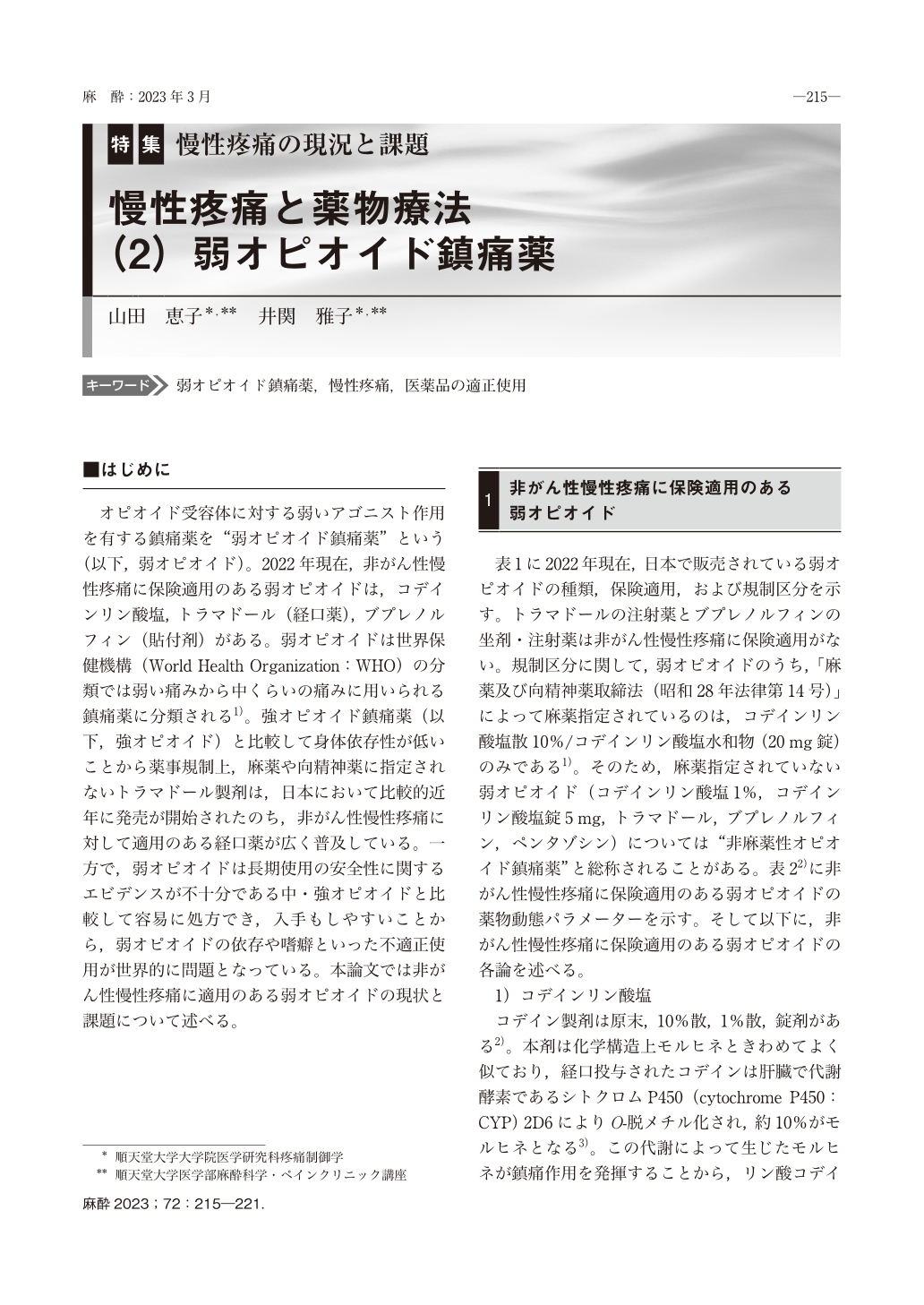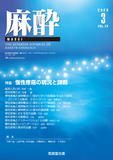Japanese
English
- 有料閲覧
- Abstract 文献概要
- 1ページ目 Look Inside
- 参考文献 Reference
はじめに
オピオイド受容体に対する弱いアゴニスト作用を有する鎮痛薬を “弱オピオイド鎮痛薬” という(以下,弱オピオイド)。2022年現在,非がん性慢性疼痛に保険適用のある弱オピオイドは,コデインリン酸塩,トラマドール(経口薬),ブプレノルフィン(貼付剤)がある。弱オピオイドは世界保健機構(World Health Organization:WHO)の分類では弱い痛みから中くらいの痛みに用いられる鎮痛薬に分類される1)。強オピオイド鎮痛薬(以下,強オピオイド)と比較して身体依存性が低いことから薬事規制上,麻薬や向精神薬に指定されないトラマドール製剤は,日本において比較的近年に発売が開始されたのち,非がん性慢性疼痛に対して適用のある経口薬が広く普及している。一方で,弱オピオイドは長期使用の安全性に関するエビデンスが不十分である中・強オピオイドと比較して容易に処方でき,入手もしやすいことから,弱オピオイドの依存や嗜癖といった不適正使用が世界的に問題となっている。本論文では非がん性慢性疼痛に適用のある弱オピオイドの現状と課題について述べる。
As of 2022, weak opioid analgesics with weak agonist effects on opioid receptors are codeine phosphate, tramadol(oral), and buprenorphine(patch), all of which are covered by health insurance for chronic non-cancer pain. Weak opioids are classified by the World Health Organization(WHO)as analgesics for weak to moderate pain. They are not designated as narcotics or psychotropics under pharmaceutical regulations because they are less to develop physically dependent than strong opioid analgesics(“strong opioids”). Tramadol, which is not classified as a narcotic or psychotropic drug under pharmaceutical regulations because it is less likely to develop physical dependence than strong opioid analgesics(“strong opioids”), was released in Japan relatively recently, and is now widely available as an oral drug for the treatment of chronic noncancer pain. On the other hand, weak opioids are easier to prescribe and more readily available than strong opioids, and their inappropriate use, with such as dependence and addiction, has become a worldwide problem, although there is insufficient evidence regarding the safety of long-term use. This paper describes the current status and issues of weak opioids indicated for the treatment of chronic non-cancer pain.

Copyright © 2023 KOKUSEIDO CO., LTD. All Rights Reserved.


